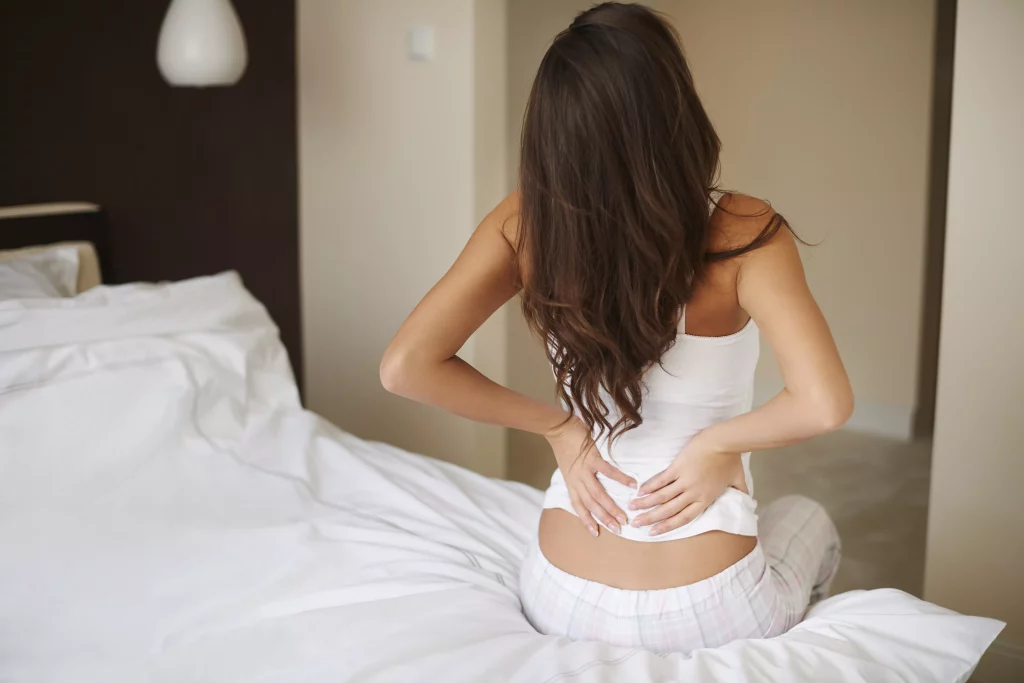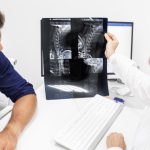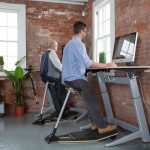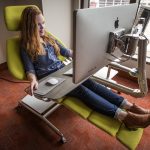By Lana Barhum
Lordosis is the medical term for a forward-curved spine in the cervical spine (neck) or the lumbar spine (lower back). A natural lordotic curve in the lower back puts the spine at a 30- to 40-degree curve and a 40- to 60-degree curve in the neck. That normal curvature naturally places the head over the pelvis and works as a shock absorber to distribute body stressors with movement.1
Exaggerated lordosis is sometimes called swayback, saddleback, or hyperlordosis.2 It develops if the spine curves too much and pushes posture out of alignment. Too little lordosis can also occur, sometimes called flatback or hypolordosis.
Changes to normal lordosis include injuries, obesity, pregnancy, and various health conditions, including joint and congenital (present at birth) disorders. Lordosis, even with too much or too little curvature, typically does not cause symptoms. But if the curvature or flatness is severe, you may feel pain and need treatment.
This article will cover how to identify the signs and symptoms of lordosis in the neck and lower back, posture correction and pain relief, causes, and more.
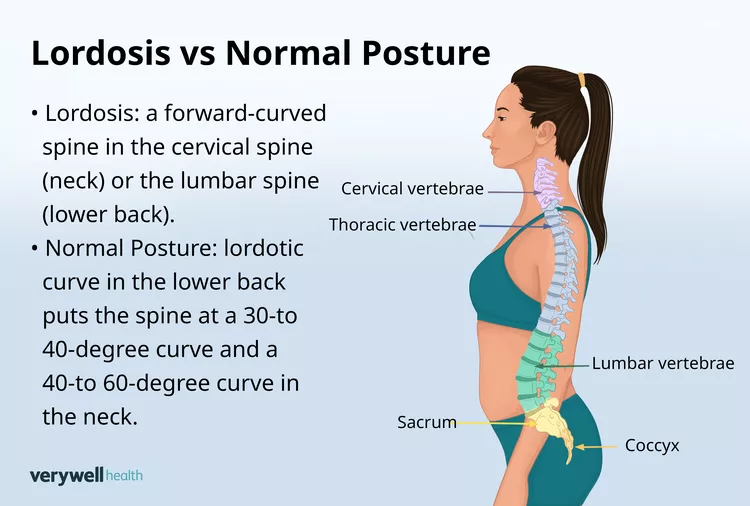
Do I Have Lordosis?
A primary characteristic of lordosis is an inward curve of the cervical spine or lumbar spine. With hyperlordosis, that curvature is even more exaggerated. Additional characteristics may apply based on the location of the excessiveness of the curve.
With hypolordosis, there is less of a curve in the lower back or a flattening of the lower back.2 This can lead to a narrowing of the openings through which the spinal nerves exit, pinching the nerves.
Cervical (Neck) Posture and Symptoms
A healthy cervical spine creates a wide C-like appearance, with the curve of the C facing inward.3 Cervical lordosis affects the normal curvature of the spine in different ways.
That curvature might be excessive or running in the wrong direction. A curve in the wrong direction is called a reverse cervical lordosis. The curvature may also be pushed more to the right or left.
Symptoms of cervical lordosis may include:4
- Neck pain
- Headaches
- Vertigo
- Fatigue
- Muscle tension
- Mid- and lower-back pain: Migrating neck pain can put stress on the muscles below the neck and lead to back pain in the mid- and lower back.
Even without active symptoms, cervical lordosis can be dangerous. This is because it makes you more susceptible to a back or neck injury after an accident, slip, or fall.4
Lumbar (Back) Posture and Symptoms
Lumbar spine lordosis is more common than cervical lordosis.5 An extreme lumbar curvature will create a visible C-like arch when you stand. With that curvature, a side view of the body will show the buttocks and the stomach area sticking out.
The easiest way to check for lumbar spine lordosis is to lie on your back on a flat surface.5 With this curvature, there will be spacing when you slide your hand below your lower back.
Symptoms of lumbar spine lordosis may include:
- Lower back pain and stiffness
- Fatigue
- Muscle tension
- Pain that radiates into both legs
Video: “Exercises for the Rehabilitation of Posture Disorders”
SET OF EXERCISES №1 TO IMPROVE POSTURE. ROUND BACK (SLOUCHING)
For additional information about exercises for the rehabilitation of Posture disorders you can watch a video demonstrating exercises and rehabilitation recommendations.
Lordosis Treatment: Necessary or Not?
Treatment for lordosis depends on the extent of the curvature and whether there is pain or other symptoms.
Lordosis Without Pain
If you are not experiencing pain with lordosis and the curvature isn’t severe, you can correct your posture. This typically involves exercises, stretches, and practicing good posture.
Good Posture
Good posture is how you hold your body when moving, sitting, or standing. It can help prevent injuries, pain, and other health problems.
The goal of good posture is a neutral spine. You can achieve that by standing or sitting with your shoulders back, your head in line with your spine, and your stomach pulled in.
Lordosis With Pain
If you have pain or a rigid spine, you should see a healthcare provider to determine the cause. Depending on the cause, you may be referred to physical therapy or a back specialist.
A pinched nerve, a damaged disk, or bone loss in the spine could cause lordosis. These conditions require further evaluation and treatment to prevent spine and nerve complications.
Risks of Untreated Back Pain
Some causes of chronic back pain are progressive, which means they will get worse over time. The longer chronic back pain goes untreated, the harder it may become to manage. Some causes will also put you at risk for spinal arthritis, herniated discs, and other painful conditions.
Chronic back pain can lead to anxiety and depression due to the heavy toll living with it takes on your mental and emotional health.6
SET OF EXERCISES №2 TO STRENGTHEN THE MUSCLES OF THE BACK, NECK, STABILIZE THE SHOULDER BLADES OF THE UPPER SPINE
How Lordosis Develops
Lordotic changes can affect people of all ages. Some people might have a higher risk for lordotic curve changes.
Bone and Spine Disorders
Several bone and spine disorders can lead to lordotic spine changes. Conditions that have been linked to lordotic spine changes include:7
- Osteosarcoma (a type of bone cancer)
- Osteoporosis (progressive bone thinning)
- Muscular dystrophy (inherited disorders causing progressive muscle weakness)
- Cerebral palsy (neurological condition due to brain damage present at or shortly after birth)
Spondylolisthesis
Spondylolisthesis is a condition that causes spine instability.7 It causes one vertebra (spinal bone) to slip forward over the one below it. It can lead to lordosis of the lower back.
Posture
Poor posture or weak abdominal muscles can lead to changes in the lumbar and cervical spines.7 Poor posture often leads to lordosis in the lower back or neck.
Obesity
Excess weight can cause bones and muscles to lean backward, forcing the body to work harder to keep itself balanced.8 An unbalanced body and spine can lead to lordotic changes and other bone, joint, and muscle problems.
Trauma
An accident, fall, or other spine injury could cause a spinal fracture that increases the curvature of the spine.7 This can occur in people who play contact sports or who are involved in automobile accidents. Lordosis can also occur after a spinal surgery that makes the spine unstable.
Childhood Lordosis
Lordotic changes in children often have no known cause.9 Some develop because of muscle problems in the hip. These types of lordosis usually resolve as a child grows and develops stronger bones and muscles. Lordosis might also be a sign of a hip dislocation due to an injury or fall.
Childhood lordosis is sometimes associated with a congenital (present at birth) problem with the vertebrae or a congenital disorder that causes structural or functional problems.9
Lordosis in Pregnancy
Pregnancy can lead to postural changes, including lordosis.10 Lordosis can occur in the second and third trimesters of pregnancy.
As the uterus grows, the body shifts its center of gravity. The excess weight puts pressure on the muscles of the lower back, while the growing uterus causes the abdominal muscles to stretch and weaken. The imbalance created between the lower back and abdominal muscles pushes the pelvis forward, creating lordosis.
Lordosis and back pain that occurs during pregnancy will typically resolve after childbirth.10
SET OF EXERCISES №3 TO IMPROVE POSTURE. FLAT BACK
Treatment for Lordosis Pain and Correction
Lordosis does not require treatment unless the curvature or symptoms are severe.
Treatment options for lordosis include:2
- Oral medications to manage pain and swelling
- Corticosteroid injections to target pain and inflammation
- Treatment for an underlying cause, such as osteopenia, osteoporosis, or a congenital disorder
- Weight loss to improve posture and prevent muscle weakness
- Daily physical activity
- Physical and water-based therapies
- Nutritional supplements, including vitamin D and calcium
- Surgery in severe cases, especially if there are neurological concerns or to repair severe curvature or rigidness.
For childhood lordosis, the child’s healthcare provider may recommend a back brace to prevent the curve from progressing as the child grows.
Chiropractic Care for Lordosis
A chiropractor is a licensed healthcare provider who focuses on treatments to help heal the neuromusculoskeletal system—the bones, nerves, muscles, tendons, and ligaments. A chiropractor can treat neck and back problems with spinal adjustments to maintain the spine’s alignment.
Research shows that chiropractic adjustments might improve cervical lordosis. For example, one 2022 study reported on chiropractic adjustments practiced over six and a half weeks, with a 17-month long-term follow-up in a 10-year-old child.4
The child responded well to treatment and achieved complete symptom resolution. Cervical lordosis was corrected to age-appropriate symmetry and remained there at the 17-month follow-up.
SET OF EXERCISES №4 TO IMPROVE POSTURE. SPINE CURVATURE (SCOLIOSIS)
Posture Exercises With Lordosis
Posture exercises stretch the muscles in the hips, thighs, lower back, and neck to improve a lordosis curve.
Such exercises include:11
Marionette Stretch
Think of this stretch as your head being pulled upward by strings, like a marionette puppet. To perform the stretch:
- Start by sitting on a chair and resting against the backrest. Put your hands in your lap.
- Slowly sit up straight with the top of the head towards the ceiling.
- Keep your gaze forward and your chin tucked. Stop when you feel a gentle pull.
- Hold the stretch for a few seconds, relax, and repeat.
Side-Bend Stretch
To perform this stretch:
- Sit in a chair with your feet flat on the floor. You can also stand with your feet hip-width apart.
- Keep the hips, shoulders, and ears in a straight line.
- Raise your right arm upward and bend the upper body to the left as if you are reaching.
- Hold the stretch for a few seconds and return to your starting position.
- Repeat on your left side and bend the upper body to the right.
Shoulder-Blade Squeeze
To perform this stretch:
- Sit or stand straight with your arms at your sides. Keep your shoulders down and relaxed.
- Slowly draw your back and squeeze the shoulder blades together as far as you can.
- Hold for a few seconds.
- Relax, and repeat several times.
Knee-to-Chest Stretch
To perform this stretch:
- Lie on your back with your knees and feet flat on the floor.
- Gently raise one knee enough for you to grab your lower leg with both hands. You should interlace your fingers under your knee. You can also do this stretch with both legs, bringing one leg up and then the other.
- Gently pull the bent knee or knees toward the trunk with your hands to the knees and bring the knees to the chest. Try to relax the legs, pelvis, and lower back.
- Hold the position and then return the leg to the floor.
- If you were only holding one leg, repeat on the other side.
- Repeat at least 10 times, once or twice a day.
Seated Trunk Rotation
To perform this stretch:
- Start by sitting on a chair with your feet flat on the floor.
- Clasp your hands together and draw a large circle around you by rotating the trunk from side to side. Keep your eyes on your hands.
- Repeat up to 10 times.
Seated Neck Stretch
To perform this stretch:
- Sit in a chair with your shoulders, back, and feet flat on the floor.
- Reach and hold the bottom of the chair with your right hand to keep your shoulders from moving upward.
- Keep your trunk straight and lower your left ear to your shoulder until you feel a stretch.
- Hold for several seconds.
- Repeat on the other side using your left hand and lowering your ear to your right shoulder.
- Repeat up to 10 times on each side.
Treating Lordosis During Pregnancy
Things you can do during pregnancy to manage lordosis include:12
- Maintaining posture: Sit or stand with your shoulders, back, and chin tucked in, with your spine in its natural alignment.
- Physical activity: Walking and yoga are great ways to support the muscles and stretch your back and abdominal muscles.
- Ergonomic support: A pregnancy pillow or lumbar support cushion can provide pain relief and promote correct spine alignment.
- Practicing proper body mechanics: Avoid bending too much. If you need to lift or do household chores, make sure you are bending at the knees while keeping the back straight.
When to See a Healthcare Provider
You should see a medical provider if you have back pain that does not resolve with at-home treatments such as over-the-counter (OTC) pain relievers, rest, exercise, and heat and cold therapy.
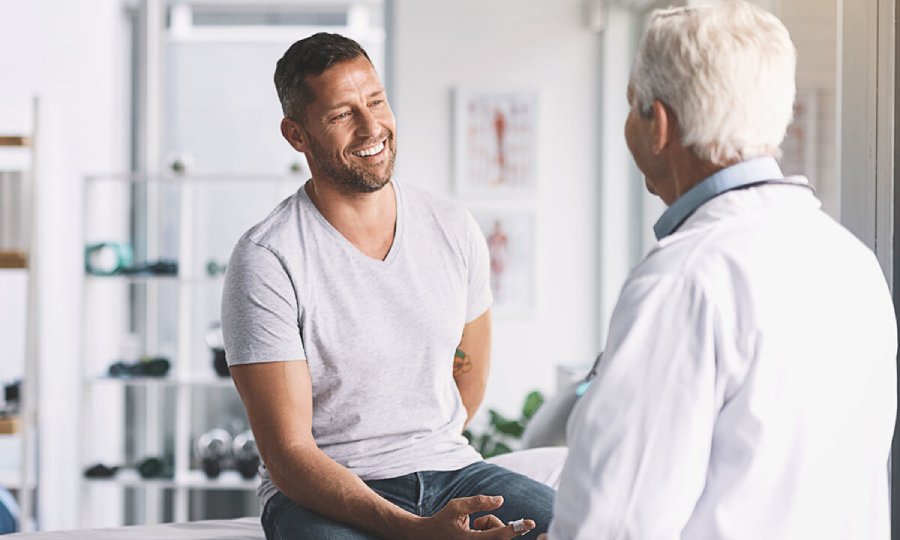
Your healthcare provider will examine your back and spine. They will ask you when your pain started and how it is affecting you daily. They may also request imaging, including X-rays, to confirm and assist in determining the diagnosis.
If you have reported weakness, numbing, or tingling that radiates to the legs from the lower back or the cervical spine into the middle or lower back, your healthcare provider may want to do a neurological exam and more sensitive imaging studies, such as a magnetic resonance imaging (MRI) or a computed tomography (CT) scan.
You should see a healthcare provider right away if your hands and feet feel numb or tingly or if you have experienced saddle anesthesia (numbing and tingling in the buttocks, perineum, and groin). These could be signs of severe spinal cord problems.13
Saddle anesthesia is a symptom of a very serious condition called cauda equina syndrome (CES). CES causes nerve root compression in the lower spinal cord. It requires emergency treatment to prevent permanent paralysis.13
Summary
Lordosis refers to a forward curve in the spine in the neck or lower back. The curvature can either be excessive (hyperlordosis) or less than normal (hypolordosis). Lordosis becomes excessive if the spine curves too much, pushing the posture out of its normal alignment.
For most people, lordosis does not cause symptoms or require treatment. For others, it may cause pain. Children with lordosis may outgrow the condition.
Poor posture, injuries, congenital disorders, obesity, osteoporosis, spondylolisthesis, and pregnancy are causes of lordosis.
Cervical lordosis causes the head to lean forward, while lumbar lordosis pushes the hips forward, causing the buttocks to stick out. Lumbar lordosis also puts extra space in the lower back, which is seen when lying down.
Symptomatic lordosis or a lordotic curve that extends further than usual or causes a rigid spine needs treatment. Treatment includes physical and water therapies, medicines to manage pain and swelling, bracing to support the spine, and surgery if the curve is severe enough or causing nerve problems.
Posture exercises might help correct the lordotic curve. You should see a healthcare provider if you have severe pain and swelling, numbness and tingling in the hands and feet, or saddle anesthesia.

